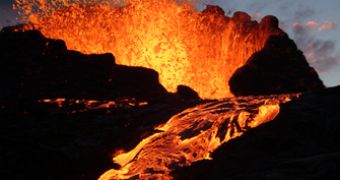Earth, like all planets in the solar system, has an inner most core, in the shape of a sphere measuring about 1,200 kilometers, consisting of a solid mass of iron, responsible for generating our planet's powerful magnetic field. Nonetheless, while implying measurements of its structure with the help of seismic waves, scientists have proven that they travel with great speeds in certain directions. For example, seismic waves seem to have greater speeds in a direction parallel to the plane of Earth rotation axis, rather than in a direction parallel to the Equator, as previously thought.
It is mostly believed that while considering the extreme temperature of the Earth's inner core, seismic waves should in fact travel at the same speed, regardless of the direction. A new theory presented in 2003, explaining what really happens in the Earth's core, in order to determine such behavior, has just been confirmed today through the use of computer simulations.
Swedish researchers, from the Uppsala University, argue that the difference between direction-dependent speed rates, equal to about 12 percent, is determined by a body-centered cubic crystal structure which experiences high degrees of symmetry and elastic anisotropy, properties that depend on direction, even though it experiences extremely high temperatures. At the time of the publication, nearly five years ago, the theory was extremely hard to comprehend, mainly due to the fact that it was coming in direct contradiction with a series of crystalline structure theories.
Nonetheless, no other crystalline structure could be modeled to account for the observed effect. Professor of condensed-matter, B?rje Johansson, says that similar to the Earth's magnetic field is the heat balance that is in direct relation to the energy stored in the inner iron core, which in turn is dependent of the crystalline structure of the iron mass.
By deriving models from the hexagonal structure of the iron core, scientist found that the most likely form of the iron crystal is a body-centered cubic crystal, with an inner atom right in the middle, and the long diagonal parallel to the planet's axis of rotation. The new theory also brings new insight in the stability of the magnetic field and the cooling rate of the planet's inner regions. The computer simulations used a density-functional theory, developed by Walter Kohn, Nobel Prize winner in 1999.

 14 DAY TRIAL //
14 DAY TRIAL //